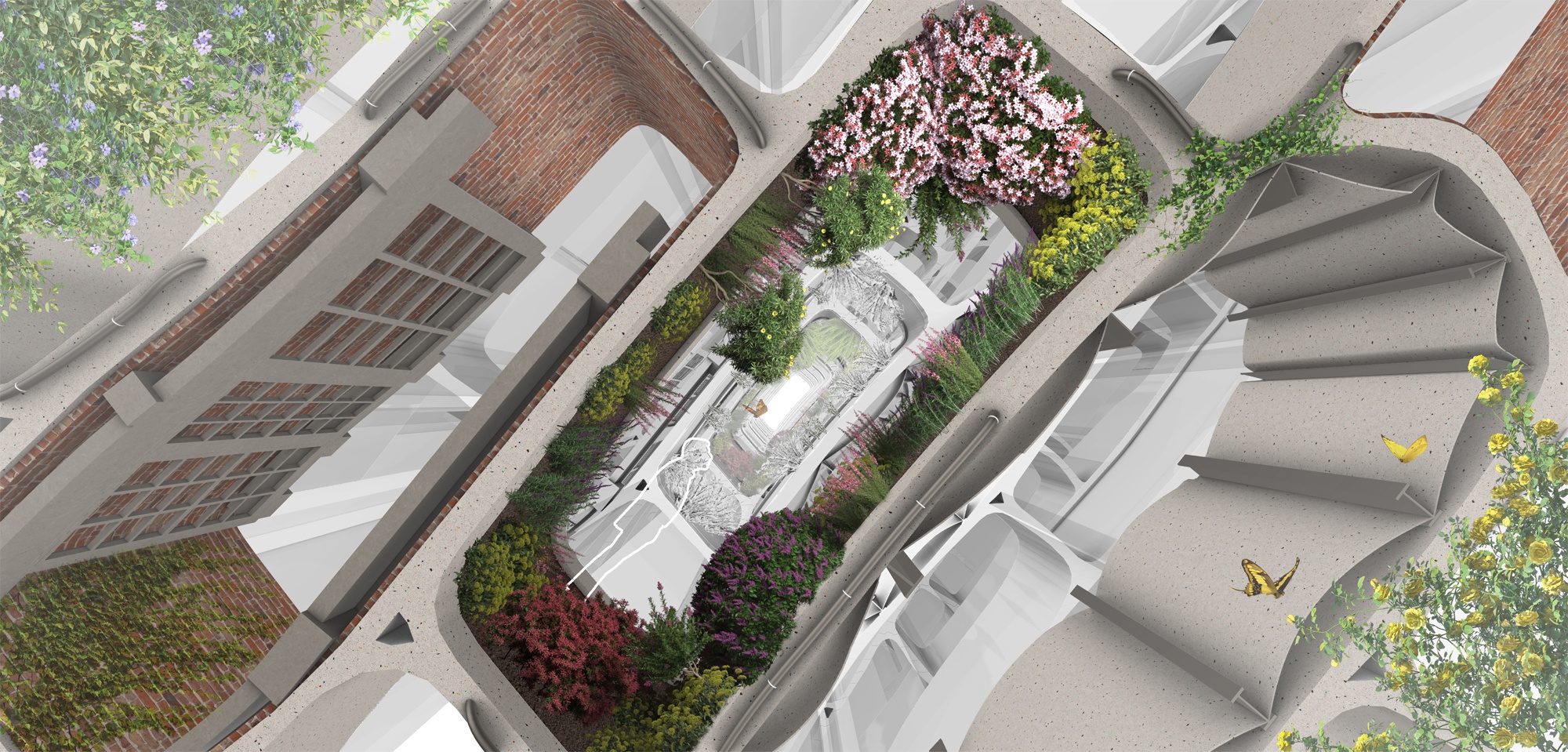From the start of the semester we approached Building 64 with a reverence for the land on which sits, and the community that it’s a part of. This reverence was inspired by our examination of a brick created by the Rose Brick Company, found in La Plaza Cultural down the block from Building 64. As we dove into the history of the brick and the support it now provides to the community gardens and their composting functions, we focused on the interconnected themes of the passage of time, decomposition, and recomposition.
When we brought these ideas to the building, we found ourselves struggling to define a future typology, use, user, or program. The building seemed to be resisting us. Instead of forcing ourselves past this resistance, we decided to embrace it, and explore it through six vignettes that seemed to represent various ecologies: Material, Sociohistorical, Human, Terrestrial, Aerial, and Memory (& Perception).
It is through our exploration of these vignettes that we’d like to challenge you, as stewards of the built environment, to imagine how this study can be a model for development that actually transcends concepts of typology, program, use, and user, and honors these densely rich arcs of Building 64’s own experiences.






